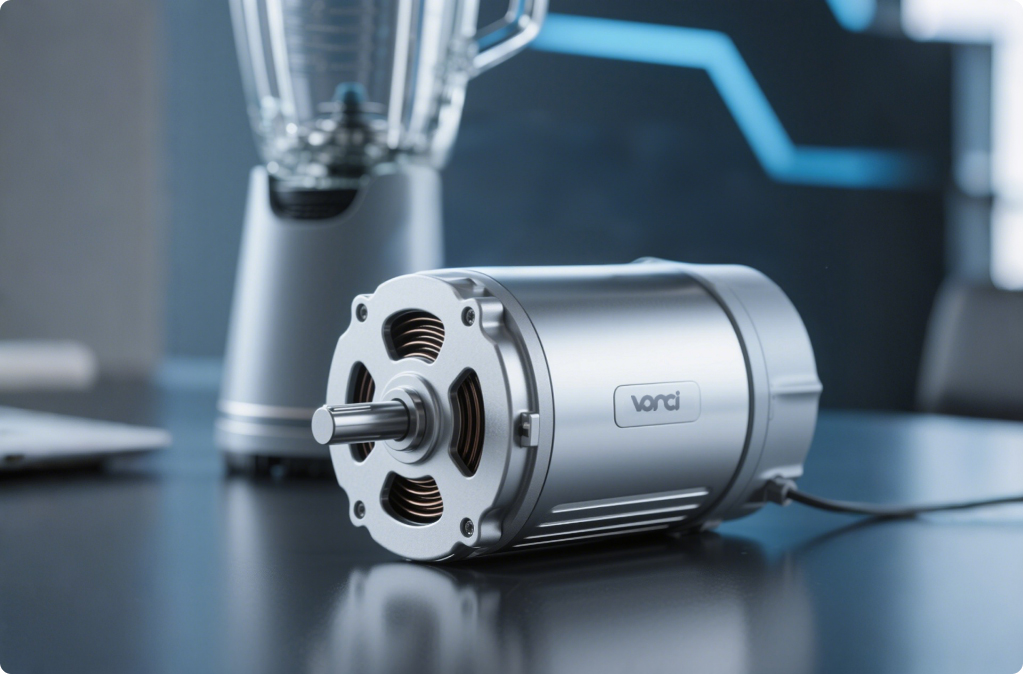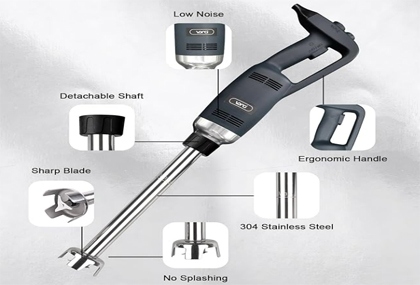How to Judge the Performance of a Blender?
May 14,2025
257
In today's era when kitchen small appliances are becoming increasingly popular, the blender, with its powerful food processing capabilities, has become a capable assistant for many families and catering practitioners. Whether it's making smooth fruit and vegetable juices, rich milkshakes, crushing hard nuts, or grinding spices, the blender can handle these tasks with ease. However, there are numerous blender brands and a wide variety of models on the market. How to judge the performance of a blender has become a key issue for consumers when making a purchase.

Next, we will deeply explore the methods of judging the performance of a blender from multiple dimensions.
The motor, as the "heart" of the blender, is the core component that determines its performance. To judge the performance of the motor, first, look at the power. Generally speaking, the higher the power, the stronger the power of the blender, enabling it to easily handle various hard - to - process ingredients. For example, a household blender used for daily fruit and vegetable juice making only needs a power of 300 - 500 watts to meet the needs; while if you need to crush ice cubes, grind nuts, etc., it is recommended to choose a blender with a power of more than 800 watts.

Secondly, pay attention to the rotation speed of the motor. A high rotation speed can make the ingredients be fully crushed and stirred in a short time, resulting in a smoother stirring effect. The rotation speed of high - quality blenders can usually reach more than 20,000 revolutions per minute, and they are equipped with a multi - speed adjustment function. Users can flexibly adjust the rotation speed according to different ingredients and production needs.
In addition, the durability of the motor and noise control cannot be ignored. A good motor uses high - quality bearings and insulating materials, has a long service life. At the same time, through optimized design and shock - absorbing technology, the operating noise is controlled at a low level, avoiding excessive noise interference during use.
The material and design of the mixing cup also have an important impact on the performance of the blender. Common mixing cup materials include glass, plastic, and stainless steel. Glass mixing cups have the advantages of high temperature resistance, being less likely to retain odors and stains, and high safety. They are suitable for making hot drinks and foods with high hygiene requirements; however, glass materials are relatively heavy and fragile, so use them with caution.
Plastic mixing cups are lightweight, not easy to break, and relatively affordable. But when choosing, make sure that the material meets the food - grade safety standard to avoid the release of harmful substances during use. Stainless - steel mixing cups are sturdy and durable, suitable for mixing hard - to - process ingredients. However, due to their opacity, it is impossible to directly observe the mixing process. In addition to the material, the capacity and shape of the mixing cup also need to be selected according to actual needs.
For household use, a mixing cup with a capacity of 1 - 1.5 liters can be selected. It can not only meet daily needs but also does not take up too much kitchen space; while commercial blenders require a larger - capacity mixing cup. The shape design of the mixing cup will affect the mixing effect of the ingredients. Mixing cups with a conical bottom or a special diversion design can make the ingredients form a more effective circulation during the mixing process, thereby improving the mixing efficiency and uniformity.
The functional modes of the blender are also an important indicator to measure its performance. Basic blenders usually have simple functions such as mixing and juicing, while high - end products may have more diverse functions, such as crushing, grinding, mincing meat, making smoothies, etc. The more functions there are, the wider the scope of application of the blender, and it can meet different cooking and production needs of users.

Some blenders are also equipped with intelligent programs, such as one - click fruit and vegetable juice mode, milkshake mode, etc. These intelligent programs can automatically complete the food processing through preset rotation speeds and mixing times, without the need for users to manually adjust. They are more convenient to use and can also ensure that the taste of the food produced each time is consistent. In addition to the number of functions, the practicality and stability of the functions are equally crucial. For example, whether the grinding function can grind the ingredients finely enough, and whether the mincing function can mix the minced meat evenly, etc., all need to be tested in actual use.
The blade is the direct component of the blender to achieve food processing, and its quality and design determine the mixing effect. The blades of high - quality blenders are usually made of high - strength stainless - steel materials, which are sharp, durable, and not easy to rust and wear. The shape and number of blades also affect the mixing effect. Common ones include cross - shaped blades, serrated blades, and multi - leaf blades. Cross - shaped blades are suitable for general mixing and juicing; serrated blades are more suitable for crushing ice cubes and harder ingredients; multi - leaf blades can generate more complex water flows during the mixing process, making the ingredients more evenly and finely mixed.
It should be noted that the installation method of the blade is also very important. A stable blade installation can ensure that it will not loosen during high - speed rotation, ensuring safe use. When choosing a blender, you can observe whether the blade and the mixing cup fit closely and whether there are problems such as excessive gaps.
Judging the performance of a blender requires comprehensive consideration of multiple aspects such as the motor, mixing cup, functional modes, and blades. When purchasing, consumers should carefully compare the various parameters and characteristics of different products according to their own usage needs and budgets. By actually trying out or referring to professional evaluations and user reviews, they can select a blender with excellent performance that suits them, making it an efficient and convenient helper in the kitchen.





